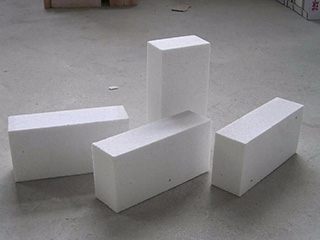Corundum bricks are among the most popular refractory materials used in high-temperature applications. These bricks are made of fused aluminum oxide (Al2O3), commonly known as corundum, which is a hard and durable material with excellent thermal stability. In this article, we will explore the properties and advantages of corundum bricks as a key component of successful refractory linings.
Properties of Corundum Bricks
Corundum bricks have a unique combination of properties that make them ideal for use in refractory linings. The following are some of the key properties of corundum bricks:
1.High melting point: Corundum bricks have a melting point of around 2050°C, which is higher than most other refractory materials. This makes them suitable for use in high-temperature applications.
2.Excellent thermal shock resistance: Corundum bricks have a very low coefficient of thermal expansion, which means they can withstand sudden changes in temperature without cracking or breaking.
3.High compressive strength: Corundum bricks have a high compressive strength, which makes them resistant to deformation under high loads.
4.High chemical stability: Corundum bricks are highly resistant to chemical corrosion, making them suitable for use in harsh chemical environments.
Advantages of Corundum Bricks
Corundum bricks offer several advantages over other refractory materials. Some of the key advantages are:
1.High resistance to wear and erosion: Corundum bricks have a high resistance to wear and erosion, which means they can withstand the abrasive effects of materials like ash, dust, and slag.
2.Low thermal conductivity: Corundum bricks have a low thermal conductivity, which means they can help to reduce heat loss in refractory linings and improve energy efficiency.
3.Easy installation: Corundum bricks are relatively easy to install and can be shaped to fit complex geometries.
4.Long service life: Corundum bricks have a long service life, which reduces the need for frequent replacement and maintenance.

Applications of Corundum Bricks
Corundum bricks are used in a wide range of high-temperature applications. Some of the most common applications include:
1.Industrial furnaces: Corundum bricks are widely used in industrial furnaces, including those used in the steel, cement, and glass industries.
2.Incinerators: Corundum bricks are used in incinerators to provide a high-temperature lining that can withstand the corrosive effects of combustion gases.
3.Refractory linings: Corundum bricks are used as a key component of refractory linings in a wide range of applications, including boilers, kilns, and reactors.
4.Foundries: Corundum bricks are used in foundries to line furnaces and crucibles used in the casting of metals.
5.Chemical processing: Corundum bricks are used in chemical processing plants to line reaction vessels and other equipment that comes into contact with corrosive chemicals.
Tips for Using Corundum Bricks in Refractory Linings
When using corundum bricks in refractory linings, it is important to follow some best practices to ensure optimal performance and longevity. Here are some tips for using corundum bricks in refractory linings:
1.Use the correct grade: Corundum bricks are available in different grades, each with different properties and characteristics. It is important to use the correct grade of corundum brick for the specific application to ensure optimal performance.
2.Choose the right installation method: Corundum bricks can be installed using a range of methods, including dry press, wet press, and casting. The installation method should be chosen based on the specific requirements of the application.
3.Consider the thermal cycling conditions: Corundum bricks are resistant to thermal shock, but it is still important to consider the thermal cycling conditions of the application. If the refractory lining will experience frequent and rapid temperature changes, it may be necessary to use a different refractory material or to incorporate additional insulation.
4.Monitor wear and erosion: While corundum bricks are highly resistant to wear and erosion, it is still important to monitor the condition of the refractory lining over time. Regular inspections can help to identify any areas of the lining that may be experiencing excessive wear or erosion, allowing for timely repairs or replacements.
5.Use a skilled installer: Corundum bricks require skilled installation to ensure proper fit and alignment. It is important to work with a qualified installer who has experience working with refractory materials.
Conclusion
Corundum bricks are a key component of successful refractory linings in a wide range of high-temperature applications. Their unique combination of properties, including high thermal stability, thermal shock resistance, and chemical stability, make them ideal for use in harsh environments. By following best practices for installation and maintenance, corundum bricks can provide a long-lasting and effective solution for refractory linings.
Contact: Mgr. Han
Phone: 0086-13589497465
Email: 1255953279@qq.com
Add: Industrial Area of Lingzi Town,Zichuan District,Zibo City, Shandong,China